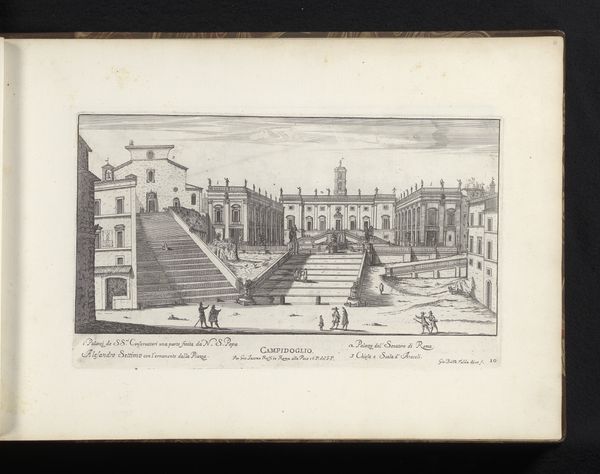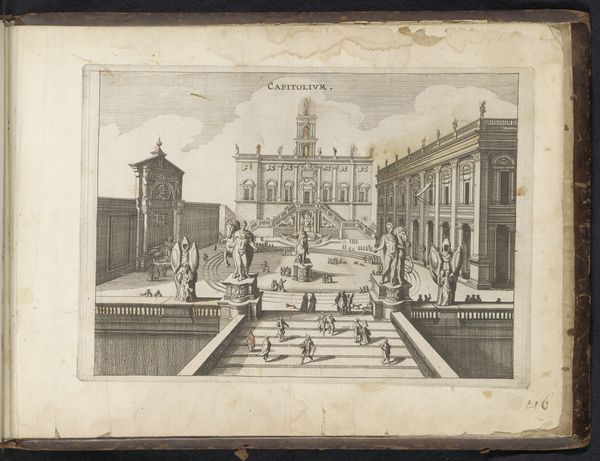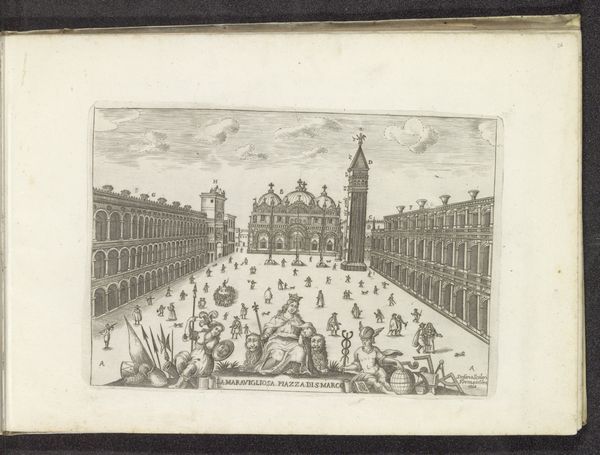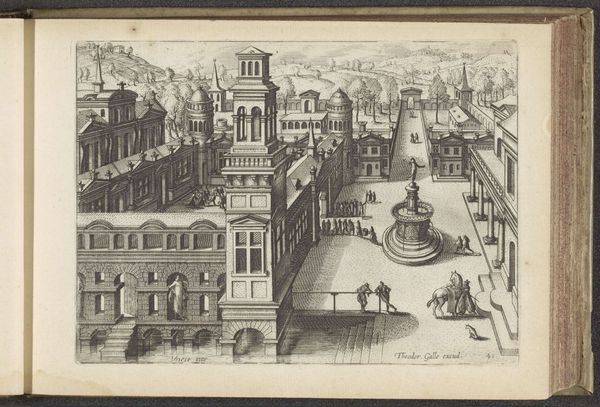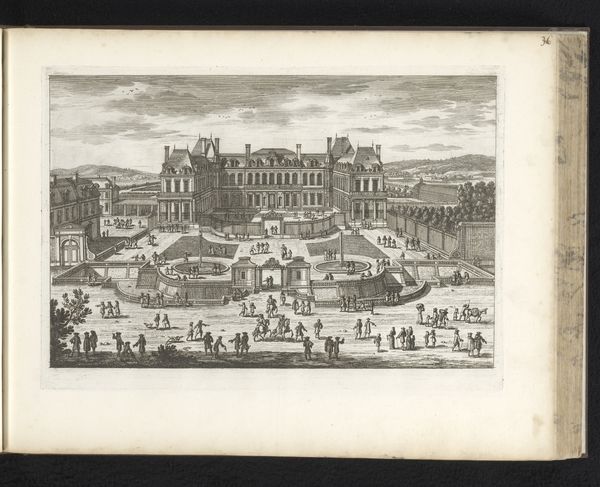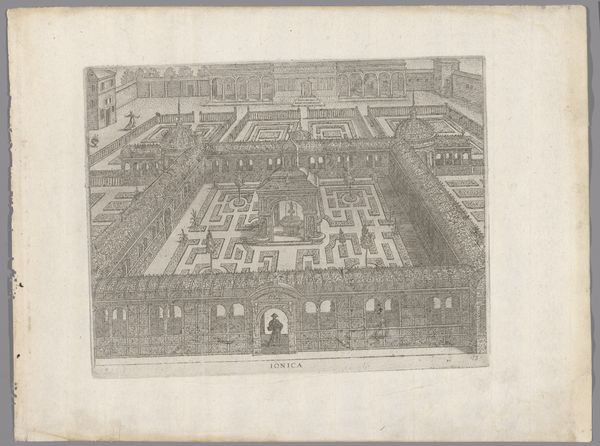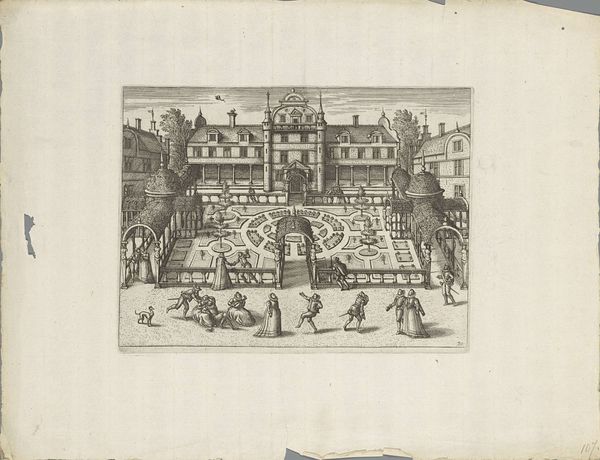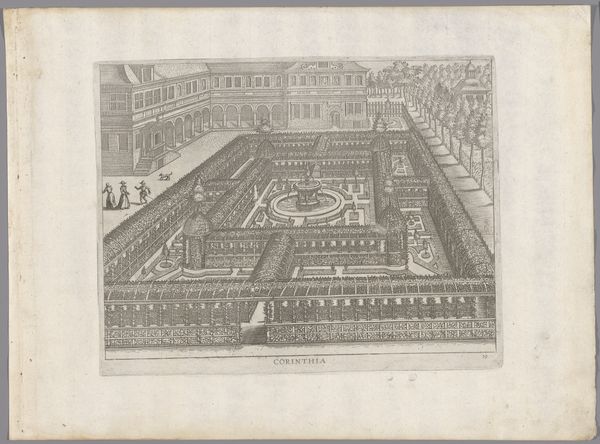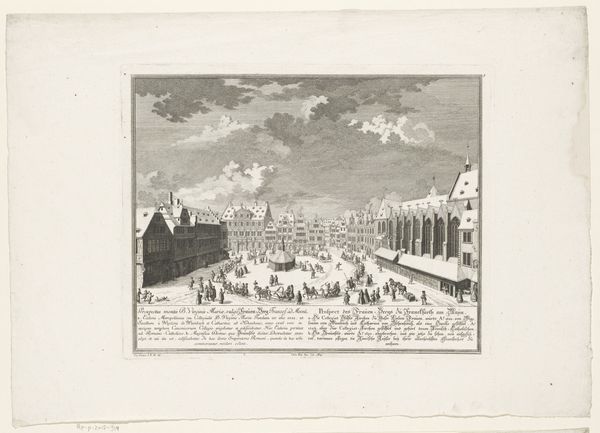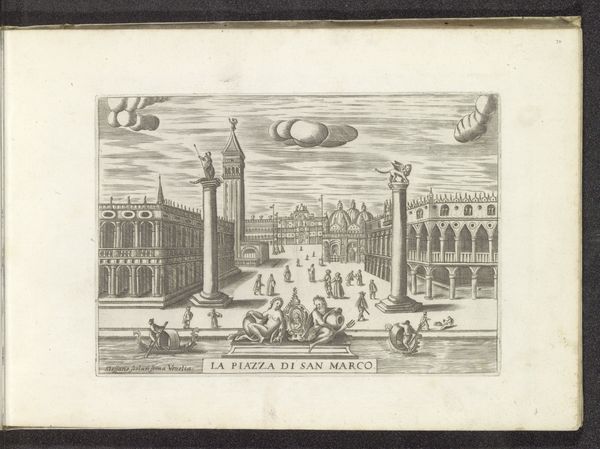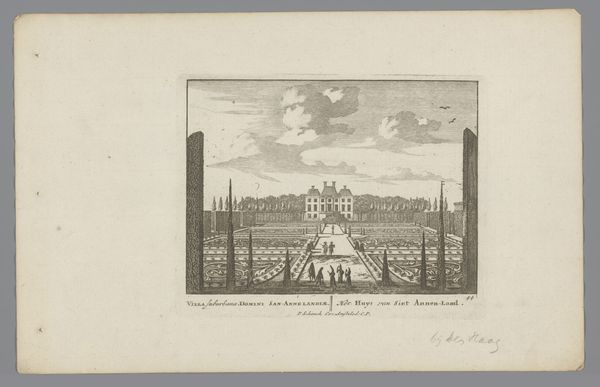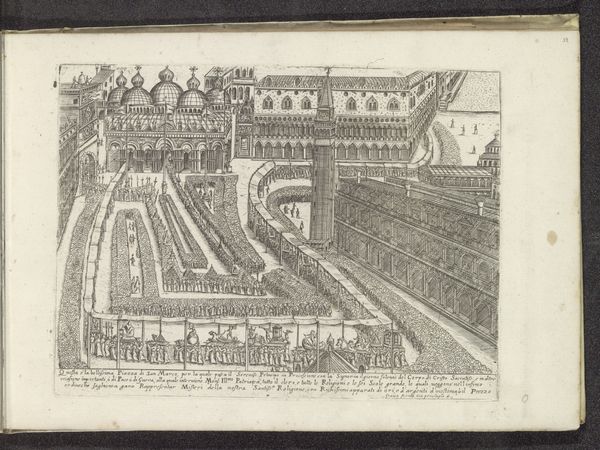
drawing, print, etching, paper, ink, engraving
#
drawing
#
aged paper
#
venetian-painting
#
baroque
# print
#
pen sketch
#
etching
#
old engraving style
#
sketch book
#
paper
#
personal sketchbook
#
ink
#
pen-ink sketch
#
square
#
pen and pencil
#
pen work
#
sketchbook drawing
#
cityscape
#
sketchbook art
#
engraving
Dimensions: height 194 mm, width 235 mm
Copyright: Rijks Museum: Open Domain
Curator: Here we have a 17th-century print entitled "Rialtobrug te Venetië," depicting the Rialto Bridge in Venice. Editor: Oh, wow. It’s got that wonderful old engraving feel. All those tiny lines working together…It’s like looking at a memory, faded and dreamy, but somehow so precise in its details. Curator: Precisely! It’s a beautiful example of the ways Venice was represented and consumed by Europeans during that era, reproduced and distributed widely as souvenirs. Notice how the artist focuses on the bridge not only as architecture but as a place for social exchange. Editor: It’s really humming with activity, isn't it? The gondolas underneath feel almost like brushstrokes, lively and chaotic. I’m getting a sense of that famous Venetian energy. You can almost hear the lapping of the water. Curator: Indeed. The Baroque period embraced dynamism, and here we see it filtered through the lens of printmaking, making Venice—a vital trading center at the time—accessible to those who might never visit in person. Prints played a critical role in shaping perceptions and ideas of places. Editor: So, what was it like to actually walk across this bridge back then? This feels staged for public viewing; what wasn’t on display, if you see what I mean? What’s cropped out? I can almost smell the canals through the print. Curator: Good questions. Considering the viewpoint is symmetrical, carefully depicting commerce and civic life, perhaps it was designed to evoke Venice as an ordered and civilized society rather than reveal more of the visceral or even unseemly side of everyday life in a port city. Editor: It makes me think about how much we choose what stories we tell about places, both then and now, with an eye for some sort of official consumption. You wonder, though, who was doing all the looking in this case and where they might be taking these memories. Curator: I think that’s spot on. Images like this helped to reinforce Venice’s carefully constructed image in the world—a brand if you will—through detailed yet idealized views of its architectural marvels and bustling society. Editor: That’s given me something to think about; these bridges to understanding history that also span the viewers' position between memory, reality, and imagination.
Comments
No comments
Be the first to comment and join the conversation on the ultimate creative platform.
